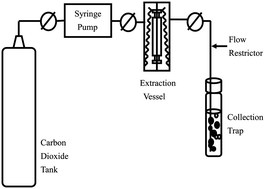Development and validation of analytical method for determination of total urinary antimony by chelation in supercritical carbon dioxide using fluorinated chelating agents
Abstract
Antimony toxicity occurs either due to occupational exposure or during therapy. There is a growing need for biological monitoring of antimony to provide exposure information to help prevent hazardous exposure. This study presents supercritical carbon dioxide (SC-CO2)


 Please wait while we load your content...
Please wait while we load your content...